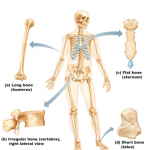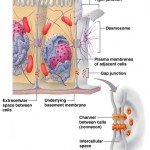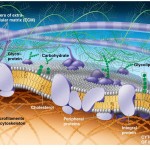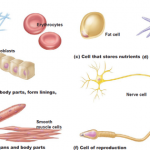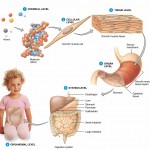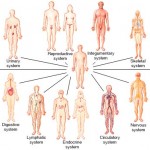Skeletal Cartilages
Along with its bones, the skeleton contains resilient cartilages, and although the major focus of this category is skeletal structure and bone tissue, we will briefly discuss the three main skeletal cartilages in this article.
Skeletal Cartilages
The human skeleton is initially made up of cartilages and fibrous membranes, but bone soon replaces most of these early supports. The few cartilages that remain in adults are found mainly in regions where flexible skeletal tissue is needed.
Basic Structure, Types, and Locations
A skeletal cartilage is made up of some variety of cartilage tissue molded to fit its body location and function. Cartilage consists primarily of water, which accounts for its resilience, that is, its ability to spring back to its original shape after being compressed.
The cartilage, which contains no nerves or blood vessels, is surrounded by a layer of dense irregular connective tissue, the perichondrium. The perichondrium acts like a girdle to resist outward expansion when the cartilage is compressed. Additionally, the perichondrium contains the blood vessels from which nutrients diffuse through the matrix to reach the cartilage cells internally. This mode of nutrient delivery limits cartilage thickness.
There are three types of cartilage tissue in the body: hyaline, elastic, and fibrocartilage. The skeletal cartilages include examples from all three. All three types have the same basic components – cells called chondrocytes, encased in small cavities (lacunae) within an extracellular matrix containing a jellylike ground substance and fibers.

The bones and cartilages of the human skeleton. The cartilages that support the respiratory tubes and larynx are drawn separately on the right.
Hyaline Cartilages
Hyaline cartilages, which look like frosted glass when freshly exposed, provide support with flexibility and resilience. They are the most abundant skeletal cartilages. Their chondrocytes are spherical, and the only fiber type in their matrix is fine collagen fibers. Skeletal hyaline cartilages include
- Articular cartilages, which cover the ends of most bones at movable joints
- Costal cartilages, which connect the ribs to the sternum (breastbone)
- Respiratory cartilages, which form the skeleton of the larynx (voicebox) and reinforce other respiratory passageways
- Nasal cartilages, which support the external nose
Elastic cartilages
Elastic cartilages resemble hyaline cartilages, but they contain more stretchy elastic fibers and so are better able to stand up to repeated bending. They are found in only two skeletal locations – the external ear and the epiglottis (the flap that bends to cover the opening of the larynx each time we swallow).
Fibrocartilages
Highly compressible with great tensile strength, fibrocartilages consist of roughly parallel rows of chondrocytes alternating with thick collagen fibers. Fibrocartilages occur in sites that are subject to both pressure and stretch, such as the pad-like cartilages (menisci) of the knee and the discs between vertebrae.
Growth of cartilage
Unlike bone, which has a hard matrix, cartilage has a flexible matrix which can accommodate mitosis. It is the ideal tissue to use to rapidly lay down the embryonic skeleton and to provide for new skeletal growth.
Cartilage grows in two ways. In appositional growth, cartilage-forming cells in the surrounding perichondrium secrete new matrix against the external face of the existing cartilage tissue. In interstitial growth, the lacunae bound chondrocytes divide and secrete new matrix, expanding the cartilage from within. Typically, cartilage growth ends during adolescence when the skeleton stops growing.
Under certain conditions – during normal bone growth in youth and during old age, for example – cartilage can become calcified (hardened due to deposit of calcium salts). Note, however, that calcified cartilage is not bone; cartilage and bone are always distinct tissues.
Review
- Describe the functional properties of the three types of cartilage tissue.
- Locate the major cartilages on an adult skeleton.
- Explain how cartilage grows.
Check your understanding
- Which type of cartilage is most plentiful in the adult body?
- What two body structures contain flexible elastic cartilage?
- Cartilage grows by interstitial growth. What does this mean?
Related Posts
Category: Skeletal



